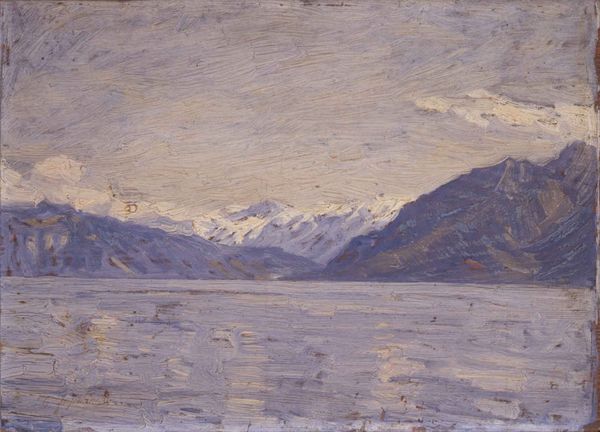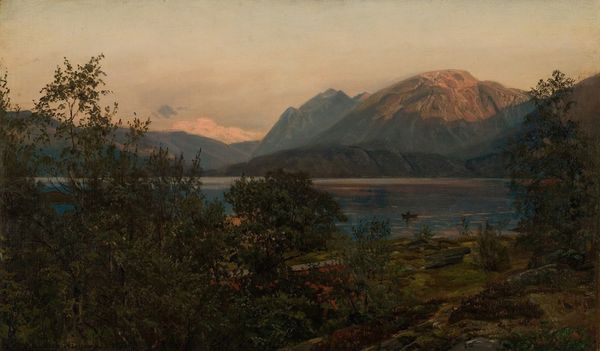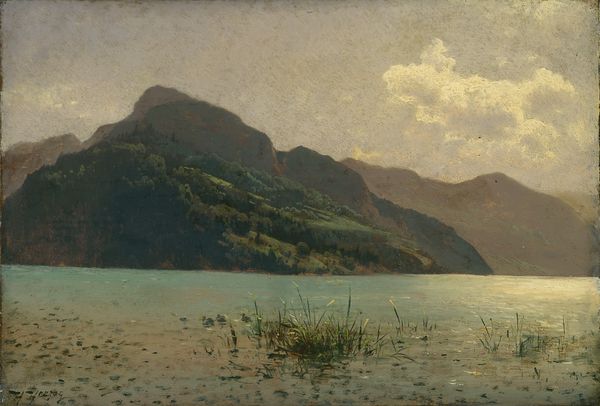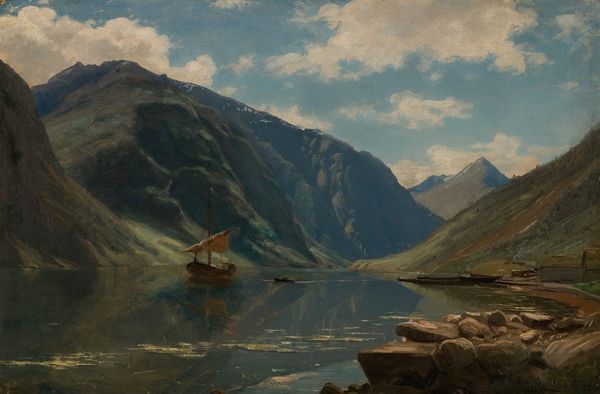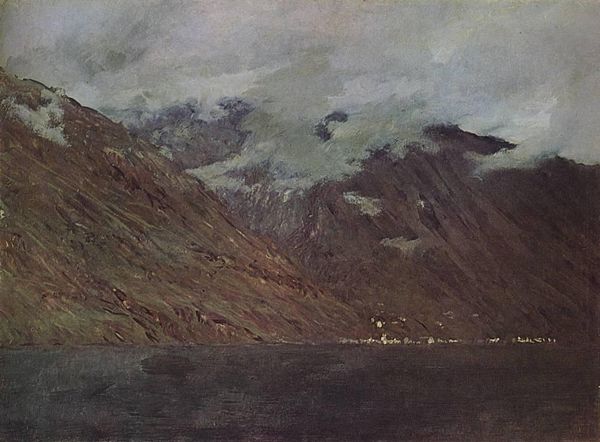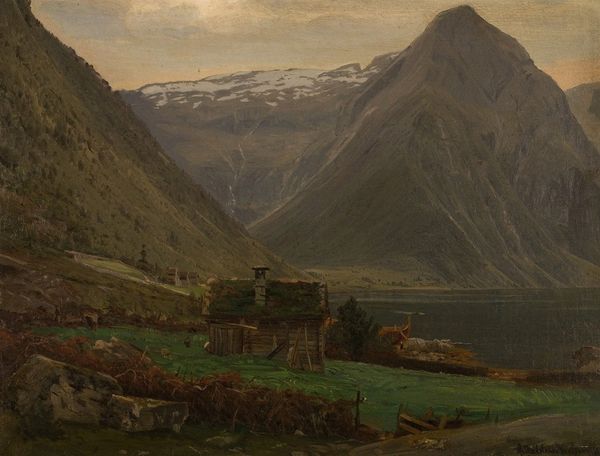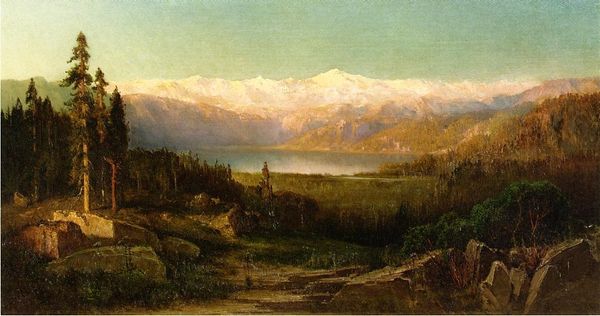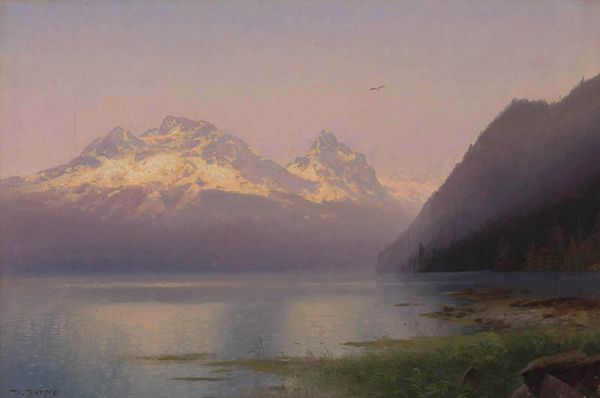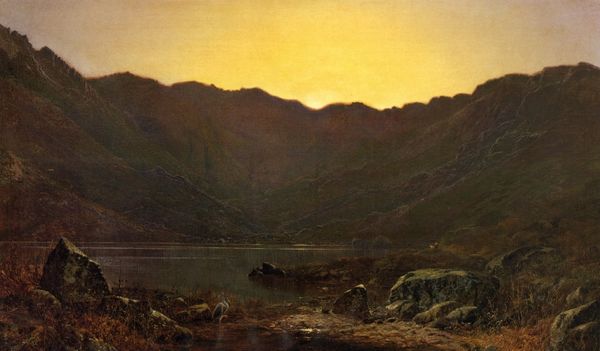
#
abstract expressionism
#
sky
#
abstract painting
#
impressionist landscape
#
possibly oil pastel
#
oil painting
#
fluid art
#
neo expressionist
#
acrylic on canvas
#
mountain
#
seascape
#
expressionist
Copyright: Public domain
Editor: This is Clarence Gagnon's "Daybreak, Lake Geneva," painted in 1913. It's predominantly blue, and it gives me this profound feeling of stillness, maybe even melancholy. What do you see in this piece? Curator: Intriguing observation. Immediately, the dominance of the colour blue demands attention, dictating the emotional register as you mentioned. Notice the geometric simplification of forms—the mountains rendered as planar masses, the water as a subtle gradation of tone. What effect do you think the artist achieves with this paring down of natural forms? Editor: I think it creates a sense of distance. Like we are observing an ideal landscape. The sharp contrast of blue with hints of yellows in the sky add to that idealized, sublime feeling, maybe? Curator: Precisely. It’s about distilling the essence of the landscape. Look closely at the brushwork; you’ll notice broad, confident strokes. There's a clear effort to construct the composition rather than to replicate the naturalism. What about the darker areas in the lower register—what role do they play in this construction? Editor: They provide a grounding element, an anchor that contrasts with the ethereality of the sky and the vastness of the lake, creating visual depth. Curator: A keen observation! This careful arrangement allows Gagnon to present us with a world filtered through subjective vision. The structural components communicate emotional meaning rather than just objective reality. Editor: I never thought about how much emotion could come through structural elements! I was too focused on subject matter! Curator: The structural, the formal, those ARE the meaning. Focusing our attention this way may transform how we see art and understand its impact on viewers.
Comments
No comments
Be the first to comment and join the conversation on the ultimate creative platform.
